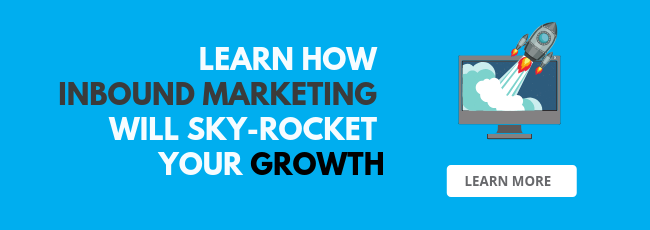
Attracting the right people to your organisation’s website is a critical part of your inbound marketing success. In order to achieve this, you need to have the right buyer personas in place that detail your potential customers’ challenges, goals, likes and dislikes.
Then you can use inbound marketing to guide prospective customers through their buyer’s journey to become loyal customers who refer your organisation. To do this, follow these three key steps:
Step 1: Create detailed customer personas
Creating detailed buyer personas will help focus your organisation's inbound marketing efforts and create more meaningful content. Personas help you get into the mindset of your prospect to understand where they go online and what they like to do. To create your personas, take a detailed look at who your current customers already are. Focus on their backgrounds, their demographics and look at their needs and challenges. Identify which blogs they read, which social networks they follow and where they like to do their research. Once you have a detailed picture of your ideal target market, you are ready to create content that’ll engage and guide them at each stage of their buyer’s journey.
Step 2: Map content to your buyer's journey
Today’s buyer (even through b2b sales stages) goes through a three-step buying process starting with awareness, moving on to consideration and decision, before ultimately purchasing. This is known as the buyer’s journey. It is integral to the development of your organisation's content and the nurturing of your leads.
- At the awareness stage create content that addresses your persona’s challenges. Your content should not try to sell anything. Instead, show that your brand identifies with the problems and needs your customers are facing.
- At the consideration stage, your prospective customer has identified their challenges and is looking for solutions. Now is your opportunity to provide additional information that shows how to meet these challenges, like a case study. At this stage, you should be driving prospects to your site and creating content that converts your visitors into leads. Don’t give your case study away for free; rather, offer it in exchange for their email address.
- At the decision stage, your prospective customer is weighing the pros and cons of all possible solutions. You need to craft content that converts each inbound lead prospecting, and nurtures them through the final stages of their buyer’s journey.
Step 3: Keep your customer engaged, post purchase
A happy customer is your best ambassador. Now is the time to maximise value and encourage them to refer your organisation to their wider network. Keep them returning to your social media sites and your website with interesting content that adds value to their lives.
You could regularly email them with special offers, which they could pass onto their friends. The key is to keep your organisation's brand fresh in their minds so they’ll turn to you when they further need your product or service.
Lupo Digital is a sales and marketing growth team that specialises in digital sales, service and inbound marketing, helping organisations with their client engagement and building strong ongoing relationships with their prospects and clients.
For more information about how inbound marketing works for your organisation, download our executive guide to inbound marketing.

Written by Michael Wolf
Founder of Lupo Digital, Michael is extremely passionate about digital and inbound marketing. Michael helps organisations drive rapid and sustainable customer and revenue growth.
SUBSCRIBE TO OUR BLOG
SUBSCRIBE TO OUR BLOG
Popular
Categories
- Inbound Marketing (97)
- Digital Marketing Strategy (85)
- HubSpot (46)
- CRM (43)
- Artificial Intelligence (AI) (39)
- Content Marketing (35)
- Business Growth (27)
- Lead Management (27)
- Marketing Automation (26)
- Email Marketing (20)
- Customer Relationship Management (CRM) (16)
- HubSpot Product Feature Updates (16)
- Sales Enablement (14)
- Referral Marketing (12)
- content strategy (10)
- Social Media Marketing (8)
- Blogging (7)
- Buyer Personas (7)
- Goal Setting (7)
- Growth Driven Website Design (7)
- Buyer Journey (6)
- SEO (5)
- Paid Media (4)
- Conversational Marketing (2)
- Influencer Marketing (2)
- Sales & CRM HUG ANZ (2)
- Customer Experience (1)
- Data Management (1)
- HubSpot CRM (1)
- Legal practice management software (1)
- User Management (1)
- training (1)



